It looks like you're using an Ad Blocker.
Please white-list or disable AboveTopSecret.com in your ad-blocking tool.
Thank you.
Some features of ATS will be disabled while you continue to use an ad-blocker.
share:
I've long had an interest in the Osireion temple at Abydos, Egypt, as it's one of those breathtaking megalithic marvels that seem to bear striking
resemblance to other megalithic sites from around the world. I was planning to make a dedicated thread about the Osireion later on but just
recently came across a related video that was uploaded just a few days ago. So I thought I might as well post that first: it does present an
interesting although not entirely uncontroversial take on the Osireion temple complex, and I thought it would be a good fit for this
forum:
And here go a few screenshots from the video:
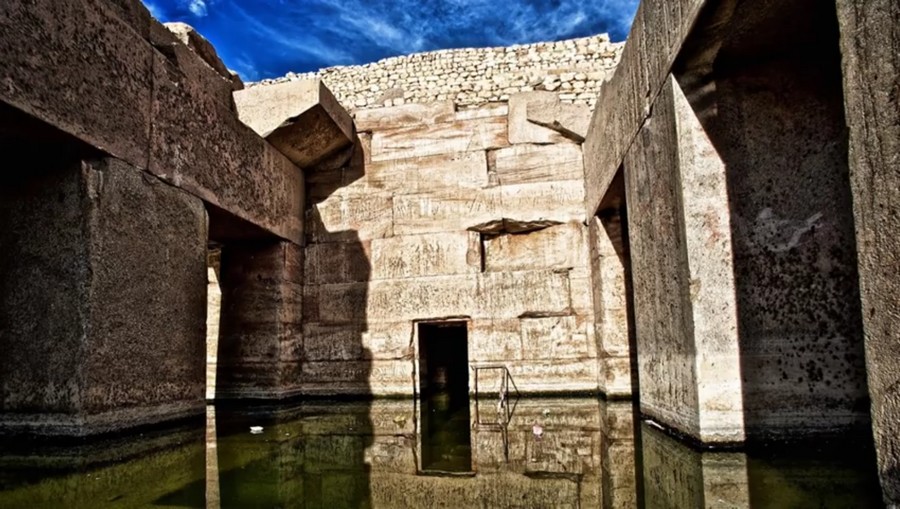
Overview of the site: The "bosses" on the wall in the back remind of similar features in Peru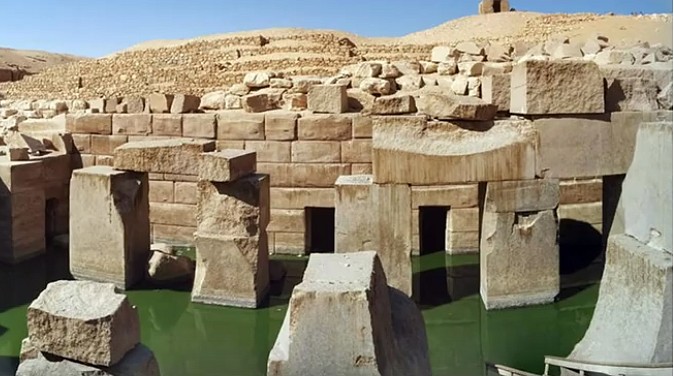
The stones' dimensions shown in perspective: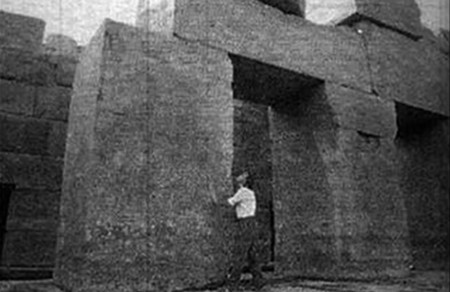
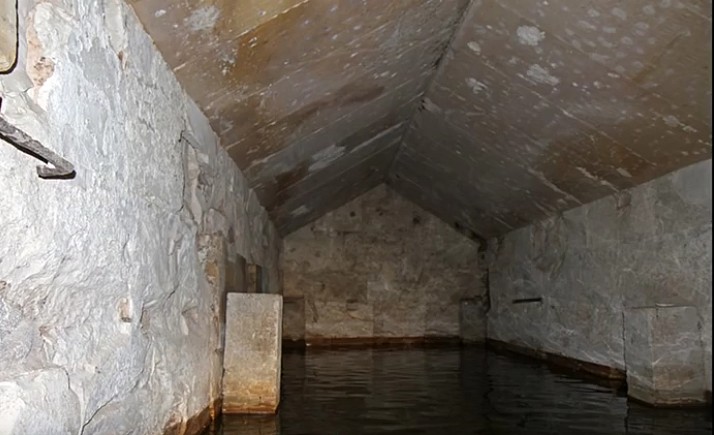
Floor plan: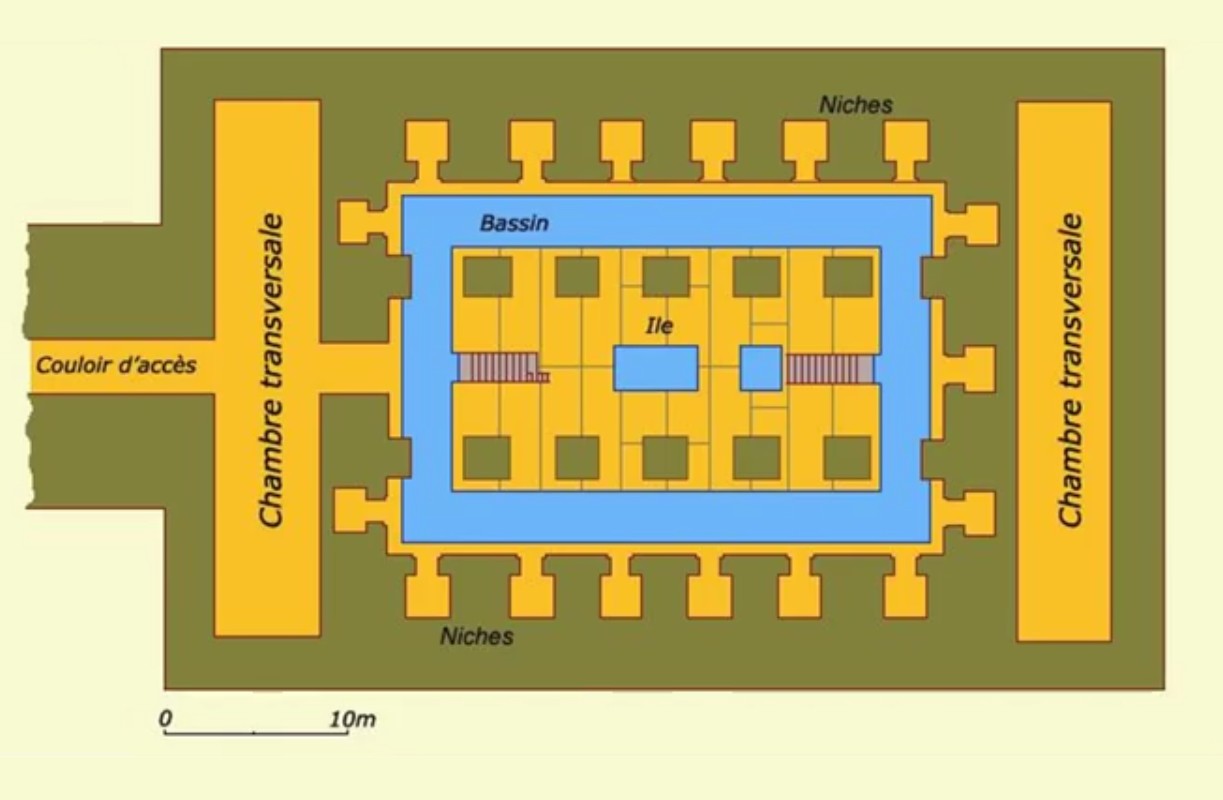
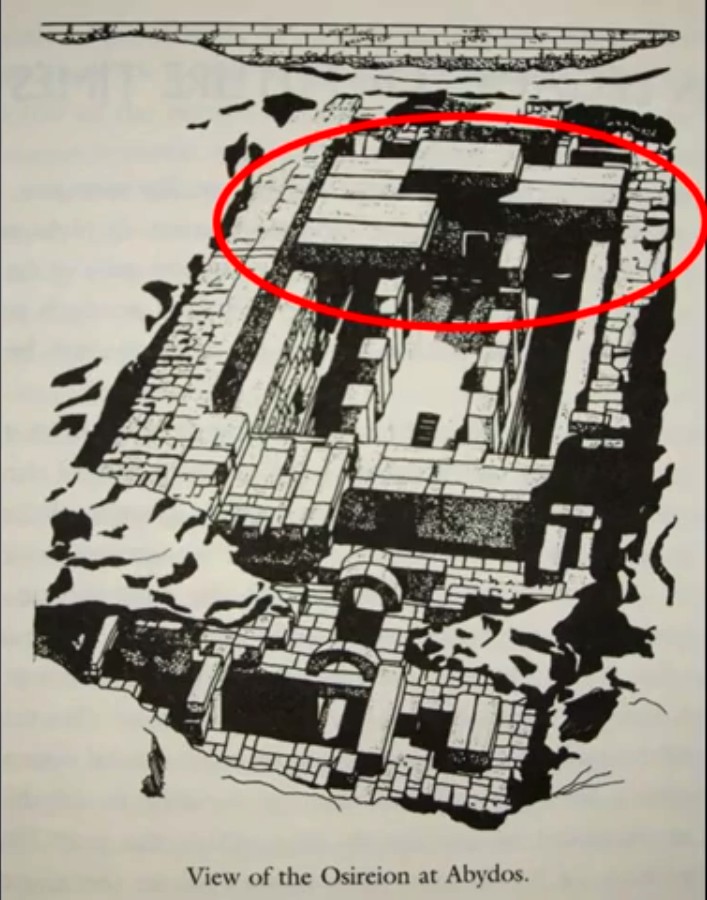
On Wikipedia we read that Strabo, a Greek philosopher and historian, who visited the Osireion in the first century BC, said that it was constructed by Ismandes, or Mandes/Amenemhet III, the same builder as that of the Labyrinth at Hawara (another megalithic structure which is shrouded in mystery):
According to Egyptology, the temple is an integral part of Seti I's funeral complex and has been built to resemble an 18th Dynasty Valley of the Kings tomb. An introduction to the mainstream interpretation of the complex can be found here in an article by Sir William Flinders Petrie (who excavated the site in the early 20th century) and Margaret Alice Murray.
Those who spent many years in Egyptology, will probably feel insulted by the kind of presentation shown in the above video, since it's obviously done by a non-archaeologist who didn't spend years studying the early cultures that we know were there in the past. On the other hand, some of the mainstream construction theories are being discussed in this video and it indeed seems difficult to buy into them given the parallels to other megalithic sites all around the globe and the limited scope of what the ancient tools were capable of accomplishing.
To make a long story short, either one of the two statements below must be true:
(1) Marc Lehner (et al.) were right all along and the ancicent Egyptians indeed invested lots of time, manpower and dedication into sawing countless granite blocks using handsaws and quartz sand. Additionally, they came up with the same or inriguingly similar stone working solutions as the megalithic builders in Peru and other places of the world.
OR
(2) There is something we overlooked, given the similarity in stone working and construction techniques seen in megalithic architecture all across the globe (e.g. Peru, Greece, Italy, Easter Island, Egypt). If that's indeed the case, then the poster of this video might really be on to something...
IMO the video discusses some of the many similarities that I've been pondering in previous threads as well, like the protrusions/knobs in some of the granite blocks (as in Cuzco, Sacsayhuaman) or the unusual shapes of some of the stones incl. precision fitting and unusual dimensions. I found this to be quite baffling and I'm wondering whether anybody else shares the view that the builders of these monuments might have been a global culture with a more advanced set of tools than we currently believe.
Sources & Links:
-----------------------------------------
01. YouTube: The Osirion & Lost Ancient Technology
02. Flinders Petrie: The Osirion at Abydos (1903)
03. Wikipedia article on the Osireion/Abydos
04. Temple of Seti I and the Osirion
And here go a few screenshots from the video:

Overview of the site: The "bosses" on the wall in the back remind of similar features in Peru

The stones' dimensions shown in perspective:


Floor plan:


On Wikipedia we read that Strabo, a Greek philosopher and historian, who visited the Osireion in the first century BC, said that it was constructed by Ismandes, or Mandes/Amenemhet III, the same builder as that of the Labyrinth at Hawara (another megalithic structure which is shrouded in mystery):
Source: Strabo/Osirion
Above this city [Ptolemaïs] lies Abydus, where is the Memnonium, a royal building, which is a remarkable structure built of solid stone, and of the same workmanship as that which I ascribed to the Labyrinth, though not multiplex; and also a fountain which lies at a great depth, so that one descends to it down vaulted galleries made of monoliths of surprising size and workmanship.[4]
According to Egyptology, the temple is an integral part of Seti I's funeral complex and has been built to resemble an 18th Dynasty Valley of the Kings tomb. An introduction to the mainstream interpretation of the complex can be found here in an article by Sir William Flinders Petrie (who excavated the site in the early 20th century) and Margaret Alice Murray.
Those who spent many years in Egyptology, will probably feel insulted by the kind of presentation shown in the above video, since it's obviously done by a non-archaeologist who didn't spend years studying the early cultures that we know were there in the past. On the other hand, some of the mainstream construction theories are being discussed in this video and it indeed seems difficult to buy into them given the parallels to other megalithic sites all around the globe and the limited scope of what the ancient tools were capable of accomplishing.
To make a long story short, either one of the two statements below must be true:
(1) Marc Lehner (et al.) were right all along and the ancicent Egyptians indeed invested lots of time, manpower and dedication into sawing countless granite blocks using handsaws and quartz sand. Additionally, they came up with the same or inriguingly similar stone working solutions as the megalithic builders in Peru and other places of the world.
OR
(2) There is something we overlooked, given the similarity in stone working and construction techniques seen in megalithic architecture all across the globe (e.g. Peru, Greece, Italy, Easter Island, Egypt). If that's indeed the case, then the poster of this video might really be on to something...
IMO the video discusses some of the many similarities that I've been pondering in previous threads as well, like the protrusions/knobs in some of the granite blocks (as in Cuzco, Sacsayhuaman) or the unusual shapes of some of the stones incl. precision fitting and unusual dimensions. I found this to be quite baffling and I'm wondering whether anybody else shares the view that the builders of these monuments might have been a global culture with a more advanced set of tools than we currently believe.
Sources & Links:
-----------------------------------------
01. YouTube: The Osirion & Lost Ancient Technology
02. Flinders Petrie: The Osirion at Abydos (1903)
03. Wikipedia article on the Osireion/Abydos
04. Temple of Seti I and the Osirion
edit on
17-12-2017 by jeep3r because: text
In time, more clues were discovered. Frankfort found the cartouche of Seti I in a granite dovetail joint. Another tenon bearing the king's cartouche was exposed when part of the sandstone wall blocks broke away (blocks that were once clad in granite), indicating its presence in the original construction. There are astronomical scenes, also made by Seti, on the ceiling of the northern transverse chamber. Other decorations were made by the king's grandson, Merenptah. Sandstone was used in the original construction (for central court wall-cladding and for the base of the island), a material used mainly beginning in the 11th Dynasty.
Source
Harte
its one of those amazing places that defy explanation, like my personal favorite baalbek
Amazing.
The thing I think about the most when I see places like this is how badly I want to live in them.
The thing I think about the most when I see places like this is how badly I want to live in them.
They couldn't have built that. They would have had to hire some Italian Masons to do that, the Italian masons can do anything.
originally posted by: jeep3r
To make a long story short, either one of the two statements below must be true:
(1) Marc Lehner (et al.) were right all along and the ancicent Egyptians indeed invested lots of time, manpower and dedication into sawing countless granite blocks using handsaws and quartz sand. Additionally, they came up with the same or inriguingly similar stone working solutions as the megalithic builders in Peru and other places of the world.
OR
(2) There is something we overlooked, given the similarity in stone working and construction techniques seen in megalithic architecture all across the globe (e.g. Peru, Greece, Italy, Easter Island, Egypt). If that's indeed the case, then the poster of this video might really be on to something...
IMO the video discusses some of the many similarities that I've been pondering in previous threads as well, like the protrusions/knobs in some of the granite blocks (as in Cuzco, Sacsayhuaman) or the unusual shapes of some of the stones incl. precision fitting and unusual dimensions. I found this to be quite baffling and I'm wondering whether anybody else shares the view that the builders of these monuments might have been a global culture with a more advanced set of tools than we currently believe.
So how do you respond to these points:
* there are thousands of Egyptian temples and tombs older than this that show the same types of stonework (many pyramids, for example, have that gabled roof you showed a photo of.) Why do you think they forgot how to make stone gables?
* The Egyptians had been working stone for around 2,000 years at the time of the Osireion and built thousands of temples, including the great Temple at Karnak, built during the same time period (New Kingdom) and covering over 240 acres How do you explain large stone temples like Karnak?
* Peruvian stones are fitted nicely only on the front but not so well behind - while Egyptian stones are regular blocks and fit well on all sides. If they learned the technique from one another wouldn't either the Peruvians have made block stones or the Egyptians made stones that were not regular in size and shape and fitted badly on the back?
* Both cultures made structures out of granite. You seem to be comparing structures that are made of different types of stone. Shouldn't you be comparing like with like?
* if a culture learned things from a literate culture, why didn't they learn their alphabet and measuring system? Shouldn't the Peruvians be using hieroglyphic script and measuring in Egyptian units... or vice-versa?
* how could Easter Island have learned these techniques over a thousand years after the Osireion was constructed? Wouldn't they have come up with new techniques by then? And why do you think the relatively crude statues of Easter Island compare to the monumental statues of Egypt?
originally posted by: Harte
In time, more clues were discovered. Frankfort found the cartouche of Seti I in a granite dovetail joint. Another tenon bearing the king's cartouche was exposed when part of the sandstone wall blocks broke away (blocks that were once clad in granite), indicating its presence in the original construction. There are astronomical scenes, also made by Seti, on the ceiling of the northern transverse chamber. Other decorations were made by the king's grandson, Merenptah. Sandstone was used in the original construction (for central court wall-cladding and for the base of the island), a material used mainly beginning in the 11th Dynasty.
Source
Harte
And there goes the first premise, I should have looked into that myself but didn't have the time I'm afraid (and didn't know it by heart either).
He probably had the Granite Temple at Giza in mind, so we'll have to shift the material discussion to that location, geographically speaking.
But thanks for clearing that up, Harte.
edit on 18-12-2017 by jeep3r because: text
originally posted by: Byrd
So how do you respond to these points:
* there are thousands of Egyptian temples and tombs older than this that show the same types of stonework (many pyramids, for example, have that gabled roof you showed a photo of.) Why do you think they forgot how to make stone gables?
Thanks for chiming in, Byrd. The fact that there is a certain consistency in architectural style compared to other monuments (e.g. when looking at the gabled roofs) could mean that we're talking about the same builders, not necessarily AE even if pottery and graffiti found in that area would indicate exactly that.
* The Egyptians had been working stone for around 2,000 years at the time of the Osireion and built thousands of temples, including the great Temple at Karnak, built during the same time period (New Kingdom) and covering over 240 acres How do you explain large stone temples like Karnak?
Since I'm not too familiar with the Karnak complex, I'll have to leave that open for now, so I can't refute the fact that you might have an argument there.
* Peruvian stones are fitted nicely only on the front but not so well behind - while Egyptian stones are regular blocks and fit well on all sides. If they learned the technique from one another wouldn't either the Peruvians have made block stones or the Egyptians made stones that were not regular in size and shape and fitted badly on the back?
This is where it gets interesting: not all of the Peruvian stones are just cladding. Some of them are, in Cuzco for example, but by far not all of them. But even some of those decorative stones that don't have precision fitting at the back, are quite massive and the exact method of how to obtain such results is still under debate. Some of the Egyptian stones also feature irregular sizes and patterns (with precision fitting) plus knobs/bosses, partly in granite, which are extremely similar to the Peruvian style.
* Both cultures made structures out of granite. You seem to be comparing structures that are made of different types of stone. Shouldn't you be comparing like with like?
I could say that this point goes to you, meaning that we should probably stick to comparing similar types of materials. On the other hand, we know from different cultures across the globe that similar styles can be found in these megalithic structures: in granite, limestone, sandstone, andesite, what have you... but yet showing similar workmanship. So perhaps we should keep an open mind here?
* if a culture learned things from a literate culture, why didn't they learn their alphabet and measuring system? Shouldn't the Peruvians be using hieroglyphic script and measuring in Egyptian units... or vice-versa?
This would imply that the builders were indeed either Inca or Ancient Egyptians, the picture would change a bit if we assume a lost civilization which left behind these monuments and not much else (at least nothing that has officially been found so far). I know we don't have any evidence for that right now, so this would probably be difficult to discuss outside the fringe community.
* how could Easter Island have learned these techniques over a thousand years after the Osireion was constructed? Wouldn't they have come up with new techniques by then? And why do you think the relatively crude statues of Easter Island compare to the monumental statues of Egypt?
Again, this implies that the dating is correct. If you stick with the official version then you are right and I'm wrong, it's as simple as that. Apart from that, I'm not so much referring to the statues but rather to the foundations of the statues in some exposed areas, which show a striking resemblance in style when compared to Peruvian megalithic architecture associated with the Incas.
An example for this could be the megalithic platform at Vinapu on Easter Island, which I have referenced in an earlier thread here.
edit on 18-12-2017 by
jeep3r because: text
Headed off in a few, and will respond more later, however....
That's not very Egyptian-looking. Long before the time of the Osireion, they were building from very regularly shaped blocks of about the same size (Akhenaten would further standardize this with "talatats", which were blocks of a size that a single person could carry them.) If you look at the Osireion, there's no tiny blocks shaped to fit things and no irregular blocks fitted in. Blocks in each layer are the same height and all have well shaped bottoms and tops.
Some of the stones were knocked over and damaged (the structure had to be rebuilt in modern times) but as with other temples and structures, the Egyptian stonework was more on par with that of ancient Greece than with any other cultures.
Edited to add, for a less damaged example of a building on a much larger scale is the massive temple of Hatshepsut ... or Karnak (far larger than Osireion), etc. The differences are possibly more clear to me because I've studied ancient architecture and I've visited Egypt (and Europe).
originally posted by: jeep3r
An example for this could be the megalithic platform at Vinapu on Easter Island, which I have referenced in an earlier thread here.
That's not very Egyptian-looking. Long before the time of the Osireion, they were building from very regularly shaped blocks of about the same size (Akhenaten would further standardize this with "talatats", which were blocks of a size that a single person could carry them.) If you look at the Osireion, there's no tiny blocks shaped to fit things and no irregular blocks fitted in. Blocks in each layer are the same height and all have well shaped bottoms and tops.
Some of the stones were knocked over and damaged (the structure had to be rebuilt in modern times) but as with other temples and structures, the Egyptian stonework was more on par with that of ancient Greece than with any other cultures.
Edited to add, for a less damaged example of a building on a much larger scale is the massive temple of Hatshepsut ... or Karnak (far larger than Osireion), etc. The differences are possibly more clear to me because I've studied ancient architecture and I've visited Egypt (and Europe).
edit on 18-12-2017 by Byrd because: (no reason given)
To suppose that today modern man could replicate and duplicate and fashion
even 3, 60 ton granite blocks, perfectly smooth and level on all sides,
along a height of 12 feet, fitting with roof beams of giant granite blocks,
with the sides, tops and bottoms fitting so precisely together a human hair
could not fit inside the joints, is not reasonable. Why would the ancient
stone-builders use the megaliths in construction if it were not easy and
efficient for them? If we try to do what they did would be expensive and
time consuming and by any method, inefficient.
a reply to: Byrd
even 3, 60 ton granite blocks, perfectly smooth and level on all sides,
along a height of 12 feet, fitting with roof beams of giant granite blocks,
with the sides, tops and bottoms fitting so precisely together a human hair
could not fit inside the joints, is not reasonable. Why would the ancient
stone-builders use the megaliths in construction if it were not easy and
efficient for them? If we try to do what they did would be expensive and
time consuming and by any method, inefficient.
a reply to: Byrd
edit on 18-12-2017 by ThatHappened because: (no reason given)
originally posted by: ThatHappened
To suppose that today modern man could replicate and duplicate and fashion
even 3, 60 ton granite blocks, perfectly smooth and level on all sides,
along a height of 12 feet, fitting with roof beams of giant granite blocks,
with the sides, tops and bottoms fitting so precisely together a human hair
could not fit inside the joints, is not reasonable. Why would the ancient
stone-builders use the megaliths in construction if it were not easy and
efficient for them? If we try to do what they did would be expensive and
time consuming and by any method, inefficient.
a reply to: Byrd
Have you looked at the Lincoln Memorial? The Hoover Dam? The Washington Monument? The French FFR Grand Stade (with its retractable roof)? The Astrodome (its roof, at a weight of 16.6 lbs per square foot is more than the weight of a similar amount of granite - 12-13 lbs per square foot.)? The Secession Building in Austria (you can't actually see the joins in the exterior surface)?
I challenge you to put a hair between any of the stone blocks in these buildings. I challenge you to find any ancient structure that was built of blocks so precisely cut that you could swap any four of them for any other blocks and the structure would not be compromised because they are so identical.
The ancient structures were not easy; no easier than today's construction projects.
edit on 18-12-2017 by Byrd because: (no reason
given)
a reply to: jeep3r
Cool stuff!
I like this russian gal who narrates these 3 vids. She makes sense. Funny too.
I think she goes over the temple, I've watched a lot of these megalithic builder vids and they run together in my head.
Cool stuff!
I like this russian gal who narrates these 3 vids. She makes sense. Funny too.
I think she goes over the temple, I've watched a lot of these megalithic builder vids and they run together in my head.
edit on 12 18 2017 by burgerbuddy because: (no reason given)
Back then no amount of money could buy the technology needed
to construct the Great Pyramid. This project is of great
difficulty one could imagine. The more men put on the job
the less work would get done. No evidence of heavy
construction equipment has been found from ancient times but
the Romans had rudimentary equipment made from wood and rope.
A huge and complex construction project such as the Hoover Dam,
or the Yantze Dam, is built today by employing high-technology
heavy equipment and countless man-hours, costing the state
billions of dollars.
In ancient times throwing men and money at a constuction project
utilizing megalithic stones would not increase output as it would
in a modern construction project. There must have been some way
they could achieve extraordinary results using limited manpower.
Today, super-cranes can lift 1200 metric tons and places like
you described (the high-rises) are built in much the same way
as when the Empire State building was constructed. Modern
materials and techniques are used.
Nobody would expect them from back then, to have a crane to lift the
Baalbek stone of 800 tons or to construct the foundation stones of
the Temple of Jupiter. Back then, it wasn't easy but they made
it seem to be, considering all of the many megalithic sites across
the world.
a reply to: Byrd
to construct the Great Pyramid. This project is of great
difficulty one could imagine. The more men put on the job
the less work would get done. No evidence of heavy
construction equipment has been found from ancient times but
the Romans had rudimentary equipment made from wood and rope.
A huge and complex construction project such as the Hoover Dam,
or the Yantze Dam, is built today by employing high-technology
heavy equipment and countless man-hours, costing the state
billions of dollars.
In ancient times throwing men and money at a constuction project
utilizing megalithic stones would not increase output as it would
in a modern construction project. There must have been some way
they could achieve extraordinary results using limited manpower.
Today, super-cranes can lift 1200 metric tons and places like
you described (the high-rises) are built in much the same way
as when the Empire State building was constructed. Modern
materials and techniques are used.
Nobody would expect them from back then, to have a crane to lift the
Baalbek stone of 800 tons or to construct the foundation stones of
the Temple of Jupiter. Back then, it wasn't easy but they made
it seem to be, considering all of the many megalithic sites across
the world.
a reply to: Byrd
edit on 18-12-2017 by ThatHappened because: (no reason given)
originally posted by: ThatHappened
Back then no amount of money could buy the technology needed
to construct the Great Pyramid. This project is of great
difficulty one could imagine. The more men put on the job
the less work would get done.
That's simply not true.
originally posted by: ThatHappened
Nobody would expect them from back then, to have a crane to lift the
Baalbek stone of 800 tons or to construct the foundation stones of
the Temple of Jupiter.
Those stones were never lifted. Other huge ones at Baalbek were, but not the foundation stones. They are, after all, on the ground.
The Roman equipment wasn't rudimentary either. They had cranes capable of lifting the stones at Baalbek that were lifted.
Harte
a reply to: jeep3r
Yes, the Osirion is quite obviously NOT the same construction as most ancient Egyptian buildings, and it really bears consideration that this existed much earlier than the temple of Seti I.
I don't know if you know the YouTuber Cfapps7865, he has a few good videos discussing the Osirion (here), and a lot of good videos on ancient Egypt and other ancient civilizations. What I like about him is that he like to read and quote from books and writings about these ancient structures that existed before the Ministry of State of Antiques was created and people like Zahi Hawass distorted and perverted (IMO) the history of Ancient Egypt, along with (again, IMO) hiding many things that bring the "accepted" history into question.
This is a good video on the Osirio from Cfapps7865--I suggest checking out his other videos. He's very dry, and sounds like a young John Goodman (to me), but the information and questions that he brings up are excellent food for thought:
Yes, the Osirion is quite obviously NOT the same construction as most ancient Egyptian buildings, and it really bears consideration that this existed much earlier than the temple of Seti I.
I don't know if you know the YouTuber Cfapps7865, he has a few good videos discussing the Osirion (here), and a lot of good videos on ancient Egypt and other ancient civilizations. What I like about him is that he like to read and quote from books and writings about these ancient structures that existed before the Ministry of State of Antiques was created and people like Zahi Hawass distorted and perverted (IMO) the history of Ancient Egypt, along with (again, IMO) hiding many things that bring the "accepted" history into question.
This is a good video on the Osirio from Cfapps7865--I suggest checking out his other videos. He's very dry, and sounds like a young John Goodman (to me), but the information and questions that he brings up are excellent food for thought:
originally posted by: Blue Shift
originally posted by: Byrd
The ancient structures were not easy; no easier than today's construction projects.
When you're building monuments to gods who could easily destroy you in multiple ways, it motivates you to do a good job.
There's no evidence they were motivated by fear (other than fear of the overseer and reluctance to go to a work site far from home.) I have no knowledge of South American deities (other than the basic ones) but I do know more about Egypt. Under their religious beliefs, if you mistreated someone, the gods would feed your heart to Amnut.
originally posted by: SlapMonkey
a reply to: jeep3r
. What I like about him is that he like to read and quote from books and writings about these ancient structures that existed before the Ministry of State of Antiques was created and people like Zahi Hawass distorted and perverted (IMO) the history of Ancient Egypt, along with (again, IMO) hiding many things that bring the "accepted" history into question.
You are aware, aren't you, that Hawass did not influence Egyptology in any great degree? He's been active in trying to get treasures returned to Egypt, in building a museum, and he's controlled access to sites. He's approved some of the reconstruction (but by no means all... people have been doing reconstruction in Egypt for centuries.)
But he was not the one who (for instance) rewrote our notion of Thtumoses III murdering Hatshepsut (a big recent change in Egyptology) and he was not the one who did the rewrite of the Pyramid Texts (that's linguist James Allen), and he was not the one who excavated Khufu's harbor and found papyrus manuscripts, and he was not the one who compiled the Amarna letters and gave us a new understanding of Akhenaten, etc, etc.
Yeah, he showed up on TV. He's got style and personality. But his accomplishments are not as great as Petrie and many others. Some of the people he disagreed with actually had the final say on bits of Egyptian history.
You shouldn't give such credit to a man who's really only a middling Egyptologist. He doesn't write our Egyptology textbooks and in fact he wasn't actually mentioned in any textbooks I used in getting my three-year Egyptology degree and his works were only briefly discussed once or twice in the entire three years I took classes from the University of Manchester.
So... what has your youtuber done in the way of excavations that gives them unusual insight into things... or are they merely someone who's read some books and a websites and made a video?
edit on 19-12-2017 by Byrd because: (no reason given)
new topics
-
Nvm
General Chit Chat: 2 hours ago -
OK this is sad but very strange stuff
Paranormal Studies: 7 hours ago -
Islam And A Book Of Lies
Religion, Faith, And Theology: 9 hours ago -
Sorry to disappoint you but...
US Political Madness: 11 hours ago
top topics
-
Sorry to disappoint you but...
US Political Madness: 11 hours ago, 13 flags -
Watch as a 12 million years old Crab Emerges from a Rock
Ancient & Lost Civilizations: 16 hours ago, 10 flags -
OK this is sad but very strange stuff
Paranormal Studies: 7 hours ago, 6 flags -
Islam And A Book Of Lies
Religion, Faith, And Theology: 9 hours ago, 5 flags -
Nvm
General Chit Chat: 2 hours ago, 1 flags
active topics
-
Musk calls on King Charles III to dissolve Parliament over Oldham sex grooming gangs
Mainstream News • 182 • : andy06shake -
Remember when Iraq invaded Kuwait
History • 30 • : glend -
OK this is sad but very strange stuff
Paranormal Studies • 3 • : covent -
Should we look for the truth, or just let it go?
US Political Madness • 125 • : Cracka -
Islam And A Book Of Lies
Religion, Faith, And Theology • 4 • : glend -
This is why ALL illegals who live in the US must go
Social Issues and Civil Unrest • 36 • : Cracka -
Volcano Watch 2025
Fragile Earth • 7 • : Cracka -
Meta Llama local AI system is scary good
Science & Technology • 40 • : glend -
The Acronym Game .. Pt.4
General Chit Chat • 1035 • : bally001 -
Joe Biden gives the USA's Highest Civilian Honor Award to Hillary Clinton and George Soros.
US Political Madness • 49 • : ADVISOR
